Reliability Analysis of Pyrotechnic Igniter for Hydrogen-Oxygen Rocket Engine with Low Temperature Combustion Instability Failure Mode
Abstract
:1. Introduction
2. Failure Analysis of Low-Temperature Unstable Combustion of the Pyrotechnic Igniter
2.1. Basic Structure and Working Principle
2.2. Failure Mode
3. Deterministic Simulation of Low Temperature of the Pyrotechnic Igniter
3.1. Simulation Model of the Pyrotechnic Igniter
3.2. Simulation Result Compared with Experimented Result
4. Reliability and Reliability Sensitivity Analysis Method of the Igniter
4.1. Kriging Model of the Igniter
4.2. Reliability Sensitivity Analysis
4.3. Reliability Simulation Implementation of the Pyrotechnic Igniter
5. Reliability and Sensitivity Analysis Results
6. Conclusions
- (1)
- The ignition simulation model of the pyrotechnic igniter was established, and the accuracy of the simulation model was verified experimentally. The results show the experimental and analytical results are in good agreement;
- (2)
- The nonlinear implicit function of pyrotechnic igniter is established with ignition impulse as performance parameter;
- (3)
- The Kriging + TLFF + MCS method is verified by analyzing the ignition reliability of the pyrotechnic igniter. The results show that the relative deviations between the Kriging + TLFF + MCS with 81 samples and the MCS are less than 1.2%;
- (4)
- Finally, the sensitivity analysis is performed to quantify the importance ranking of random variables, which offers a valuable insight into reliability-based design and optimization process for the pyrotechnic igniter. The results indicate parameter d is the main factor affecting the ignition reliability of the pyrotechnic igniter, followed by nMLR, ρCMDB and ρBPN. Further improvement measures are presented based on reliability and sensitivity results for the pyrotechnic igniter and the correctness of the improved measures was verified by experiment.
Author Contributions
Funding
Institutional Review Board Statement
Informed Consent Statement
Data Availability Statement
Acknowledgments
Conflicts of Interest
References
- Cai, J.R. Design Principle of Initiating Explosive Devices; Beijing Institute of Technology Press: Beijing, China, 1999. [Google Scholar]
- Zhou, C.; Yu, N.; Wang, J.; Jin, P.; Cai, G. Analysis of dynamic characteristics and sensitivity of hydrogen-oxygen expansion cycle rocket engine system. Acta Astronaut. 2021, 189, 624–637. [Google Scholar]
- Saurel, R.; Loraud, J.C.; Larini, M. Optimization of a pyrotechnic igniter with the release of reactive particles. Shock Waves 1991, 1, 121–133. [Google Scholar]
- Skaggs, M.N.; Hargather, M.J.; Cooper, M.A. Characterizing pyrotechnic igniter output with high-speed schlieren imaging. Shock Waves 2017, 27, 15–25. [Google Scholar]
- Oh, J.; Jang, S.; Yoh, J.J. Towards understanding the effects of heat and humidity on ageing of a NASA standard pyrotechnic igniter. Sci. Rep. 2019, 9, 10203. [Google Scholar] [PubMed] [Green Version]
- Abdullah, U.; Risha, G.A.; Kuo, K.K. An Investigation of the Performance of a Boron/Potassium Nitrate Based Pyrotechnic Igniter. Propell. Explos. Pyrot. 2006, 31, 311–317. [Google Scholar]
- Gnanaprakash, K.; Han, B.; Yoh, J.J. Ignition and combustion behavior of zirconium-based pyrotechnic igniters and pyrotechnic delays under aging. P. Combust. Inst. 2021, 38, 4373–4381. [Google Scholar]
- Zhong, Q.; Li, Y.; Chen, J.; Song, D. Boron/potassium nitrate microspheres fabricated by electrostatic spraying and their combustion characteristic as pyrotechnic ignitor. J. Therm. Anal. Calorim. 2019, 138, 3349–3355. [Google Scholar]
- Fuchao, L.; Pengfei, W.; Changcong, Z.; Zhufeng, Y. Reliability and reliability sensitivity analysis of structure by combining adaptive linked importance sampling and Kriging reliability method. Chin. J. Aeronaut. 2020, 33, 1218–1227. [Google Scholar]
- Zhang, X.; Wang, L.; Sørensen, J.D. AKOIS: An adaptive Kriging oriented importance sampling method for structural system reliability analysis. Struct. Saf. 2020, 82, 101876. [Google Scholar]
- Nicholas, M.; Ulam, S. The Monte Carlo Method. J. Am. Stat. Assoc. 1949, 44, 41–335. [Google Scholar]
- Bezerra, M.A.; Santelli, R.E.; Oliveira, E.P.; Villar, L.S.; Escaleira, L.A. Response surface methodology (RSM) as a tool for optimization in analytical chemistry. Talanta 2008, 76, 965–977. [Google Scholar] [PubMed]
- Bucher, C.G.; Bourgund, U. A fast and efficient response surface approach for structural reliability problems. Struct. Saf. 1990, 7, 57–66. [Google Scholar]
- Dai, H.; Zhang, H.; Wang, W.; Xue, G. Structural reliability assessment by local approximation of limit state functions using adaptive Markov chain simulation and support vector regression. Comput.-Aided Civ. Infrastruct. Eng. 2012, 27, 676–686. [Google Scholar]
- Cheng, K.; Lu, Z.Z.; Zhou, Y.C.; Shi, Y.; Wei, Y. Global sensitivity analysis using support vector regression. Appl. Math. Model. 2017, 49, 587–598. [Google Scholar]
- Bichon, B.J.; Eldred, M.S.; Swiler, L.P.; Mahadevan, S.; McFarland, J.M. Efficient Global Reliability Analysis for Nonlinear Implicit Performance Functions. AIAA J. 2008, 46, 2459–2468. [Google Scholar]
- Hurtado, J.E.; Alvarez, D.A. Neural-network-based reliability analysis: A comparative study. Comput. Method Appl. Mech. Eng. 2001, 191, 113–132. [Google Scholar]
- Zhang, X.B.; Lu, Z.Z.; Cheng, K. AK-DS: An adaptive Kriging-based directional sampling method for reliability analysis. Mech. Syst. Signal Process. 2021, 156, 107610. [Google Scholar]
- Peijuan, Z.; Ming, W.C.; Zhouhong, Z.; Liqi, W. A new active learning method based on the learning function U of the AK-MCS reliability analysis method. Eng. Struct. 2017, 148, 185–194. [Google Scholar]
- Hu, Z.; Mahadevan, S. A single-loop Kriging surrogate modeling for time-dependent reliability analysis. J. Mech. Des. 2016, 168, 61406–611411. [Google Scholar]
- Echard, B.; Gayton, N.; Lemaire, M. AK-MCS: An active learning reliability method combining Kriging and Monte Carlo Simulation. Struct. Saf. 2011, 33, 145–154. [Google Scholar]
- Liu, Z.; Lu, Z.; Ling, C.; Feng, K.; Hu, Y. An improved AK-MCS for reliability analysis by an efficient and simple reduction strategy of candidate sample pool. Structures 2022, 35, 373–387. [Google Scholar]
- Sun, Z.; Wang, J.; Li, R.; Tong, C. LIF: A new Kriging based learning function and its application to structural reliability analysis. Reliab. Eng. Syst. Saf. 2017, 157, 152–165. [Google Scholar]
- Simpson, T.W.; Mauery, T.M.; Korte, J.J.; Mistree, F. Kriging Models for Global Approximation in Simulation-Based Multidiscipli-nary Design Optimization. AIAA J. 2001, 39, 2233–2241. [Google Scholar]
- Wang, D.; Qiu, H.; Gao, L.; Jiang, C. A single-loop Kriging coupled with subset simulation for time-dependent reliability analysis. Reliab. Eng. Syst. Saf. 2021, 216, 107931. [Google Scholar]
- Kuzenov, V.V.; Ryzhkov, S.V. Evaluation of the possibility of ignition of a hydrogen–oxygen mixture by erosive flame of the impulse laser. Laser Phys. 2019, 29, 096001. [Google Scholar]
- Blanchar, J. A physical strength-stress interference model explaining infant and random mortalit. Microelectron. Reliab. 1996, 36, 1379–1388. [Google Scholar]
- Wang, J.G.; Yu, Y.G.; Zhou, L.L.; Ye, R. Numerical simulation and optimized design of cased telescoped ammunition interior ballistic. Def. Technol. 2018, 14, 119–125. [Google Scholar]
- Zhang, R.; Rui, X.; Li, C.; Wang, Y.; Zhao, X.; Dong, X. A calculation method of interior ballistic two-phase flow considering the compression and fracture process of propellant bed. Int. Commun. Heat Mass Transf. 2020, 115, 104601. [Google Scholar]
- Jin, Z.M. Interior Ballistics of Guns; Beijing Institute of Technology Press: Beijing, China, 2004. [Google Scholar]
- Kubota, N. Propellants and Explosives: Thermochemical Aspects of Combustion; John Wiley & Sons: New York, NY, USA, 2015. [Google Scholar]
- Jang, S.G.; Lee, H.N.; Oh, J.Y. Performance Modeling of a Pyrotechnically Actuated Pin Puller. Int. J. Aeronaut. Space 2014, 15, 102–111. [Google Scholar]
- Paul, B.H.; Gonthier, K.A. Analysis of gas-dynamic effects in explosively actuated valves. J. Propuls. Power 2010, 26, 479–496. [Google Scholar]
- Chen, X.H.; Tian, X.H.; Su, L.Y. Spacecraft Propulsion Theory; National Defense Industry Press: Beijing, China, 2013. [Google Scholar]
- Lee, J.; Han, J.-H.; Lee, Y.; Lee, H. Separation characteristics study of ridge-cut explosive bolts. Aerosp. Sci. Technol. 2014, 39, 153–168. [Google Scholar]
- Hwang, D.H.; Han, J.H.; Lee, J.; Lee, Y.; Kim, D. A mathematical model for the separation behavior of a split type low-shock separation bolt. Acta Astronaut. 2019, 164, 393–406. [Google Scholar]
- Zhang, X.; Yan, X.; Yang, Q. Design and experimental validation of compact, quick-response shape memory alloy separation device. J. Mech. Des. 2013, 136, 011009.1–011009.9. [Google Scholar]
- Gonthier, K.A.; Powers, J.M. Formulation, Predictions, and Sensitivity Analysis of a Pyrotechnically Actuated Pin Puller Model. J. Propuls. Power 1994, 10, 501–507. [Google Scholar]
- Kiran, D.S.; Kumar, S.P. Multi Objective Optimization of tool life and total cost using 3-level full factorial method in CNC end milling process. Int. J. Rob. Res. 2013, 2, 255–270. [Google Scholar]
- Ulaganathan, S.; Couckuyt, I.; Deschrijver, D.; Laermans, E.; Dhaene, T. A Matlab Toolbox for Kriging Metamodelling. Procedia Comput. Sci. 2015, 51, 2708–2713. [Google Scholar]
- Yun, W.Y.; Lu, Z.Z.; Jiang, X. AK-SYSi: An improved adaptive Kriging model for system reliability analysis with multiple failure modes by refined U learning function. Struct. Multidiscip. Optim. 2019, 59, 263–278. [Google Scholar]
- Rubinstein, R.Y. Simulation and the Monte Carlo Method; John Wiley & Sons: New York, NY, USA, 1981. [Google Scholar]
- Tu, H.; Lou, W.; Sun, Z.; Qian, Y. Structural reliability simulation for the latching mechanism in MEMS-based Safety and Arming device. Adv. Eng. Softw. 2017, 108, 48–56. [Google Scholar]
- Cornell, C.A. A probability-based structural code. J. Am. Concr. Inst. 1969, 66, 974–985. [Google Scholar]
- Ditlevsen, O.; Madsen, H.O. Structural Reliability Methods; John Wiley & Sons: West Sussex, UK, 2007; pp. 94–101. [Google Scholar]
- Der Kiureghian, A.; Liu, P.L. Structural reliability under incomplete probability information. ASCE J. Eng. Mech. 1986, 112, 85–104. [Google Scholar]
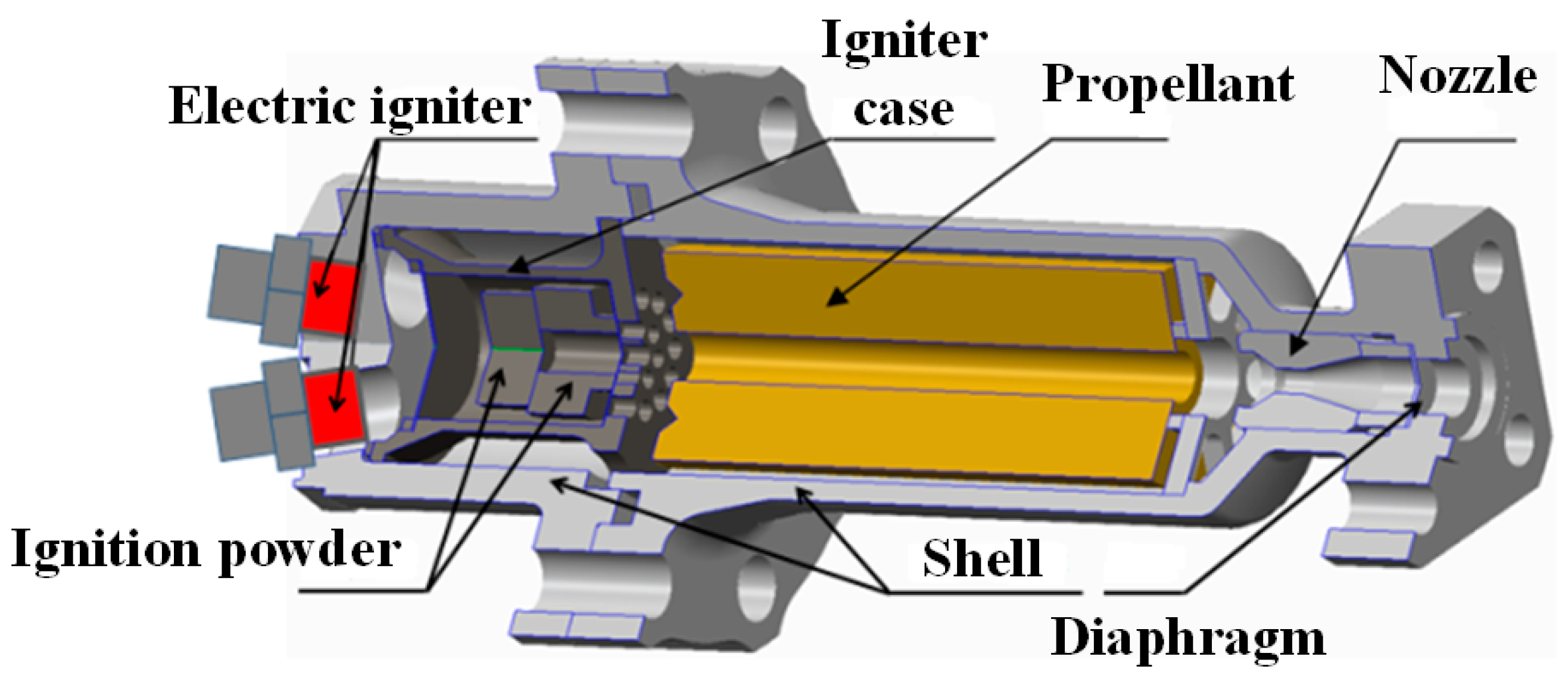
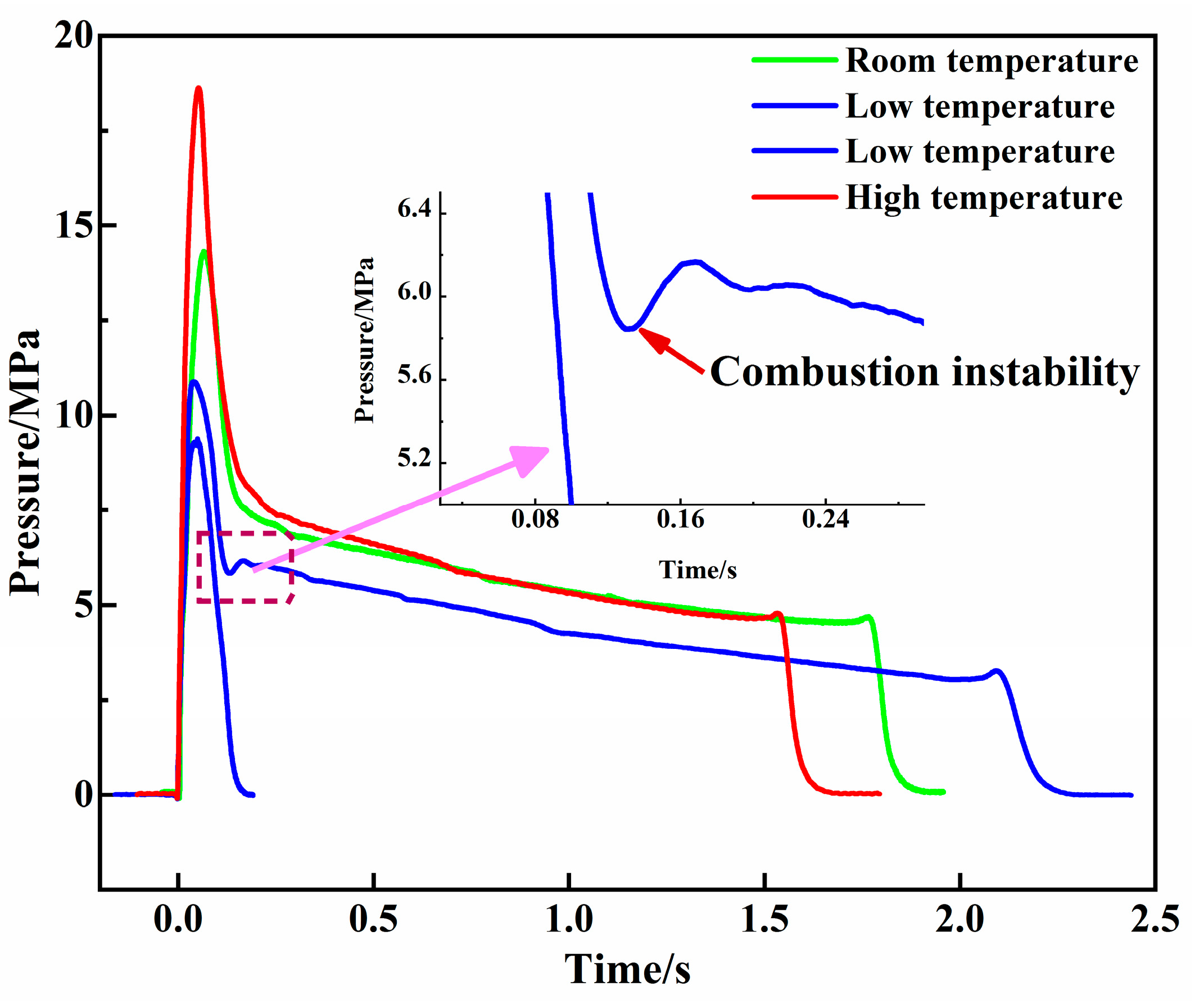
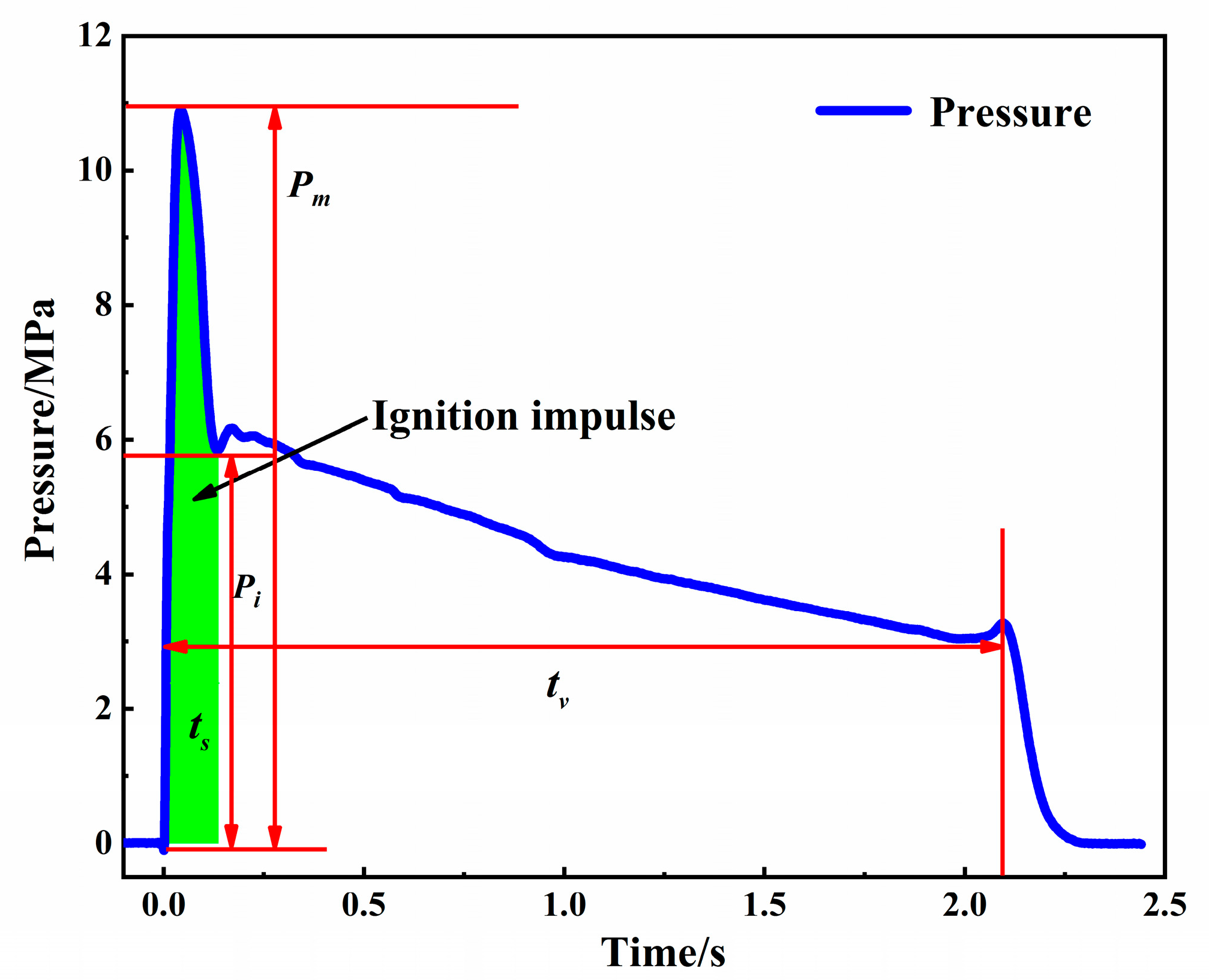
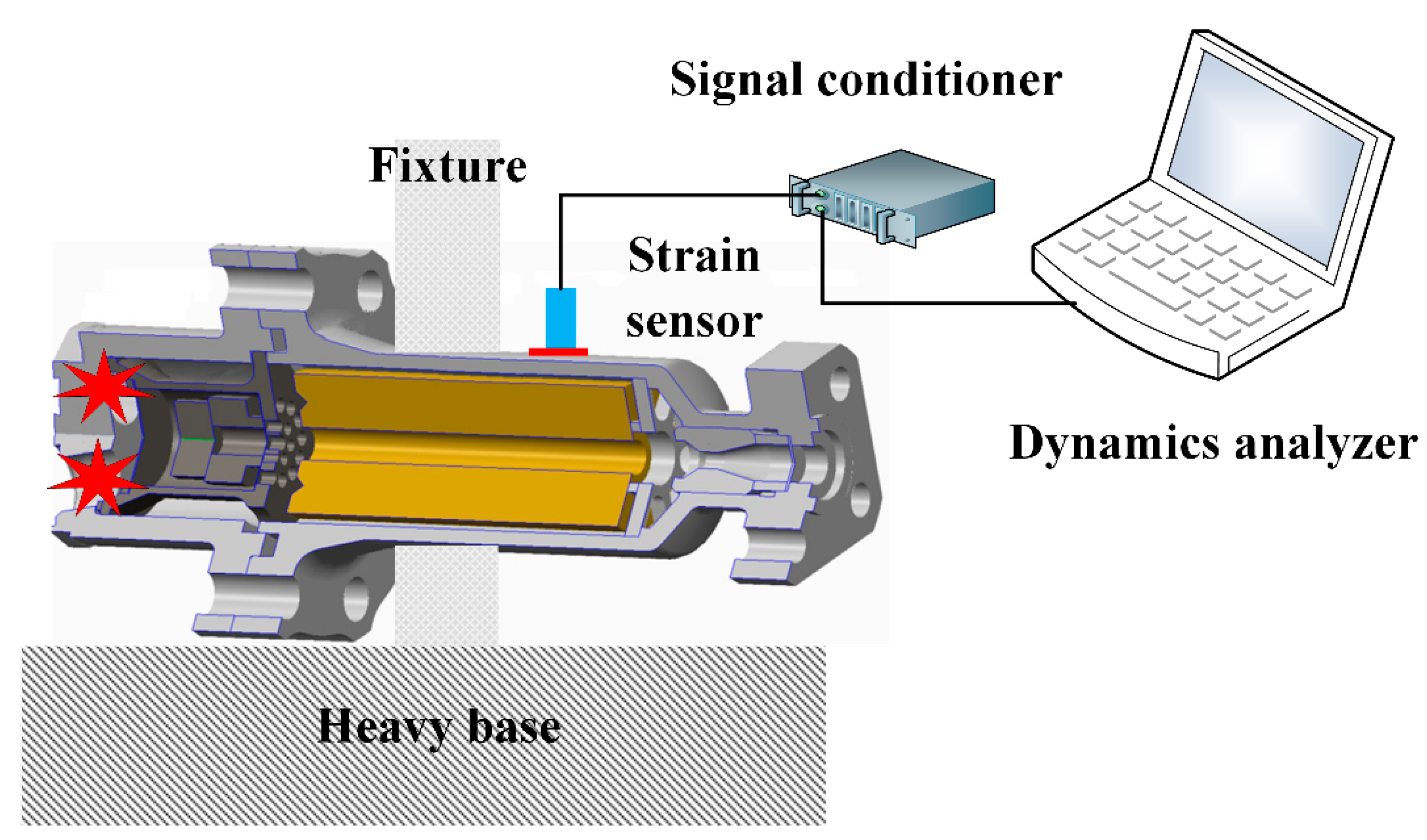

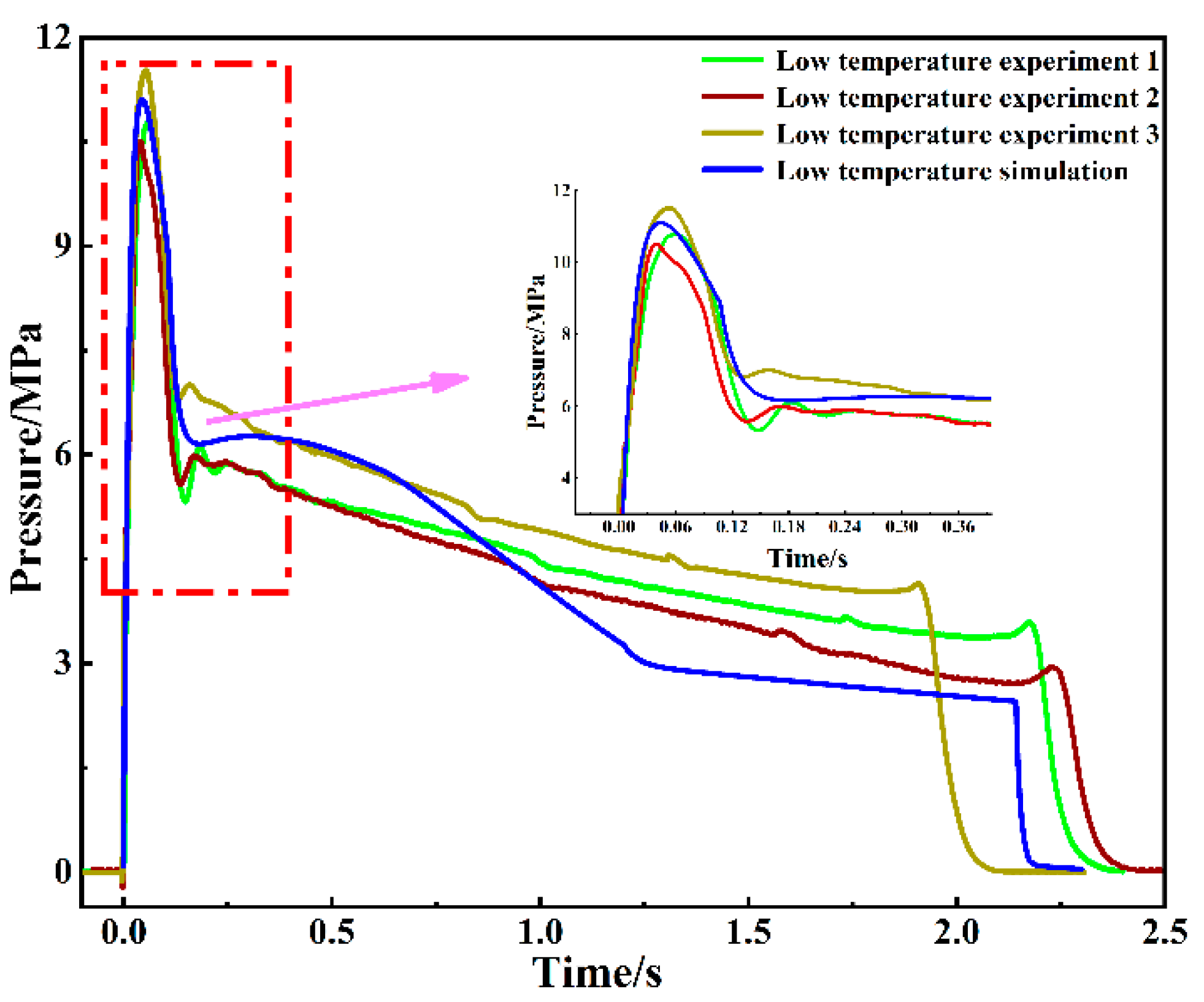

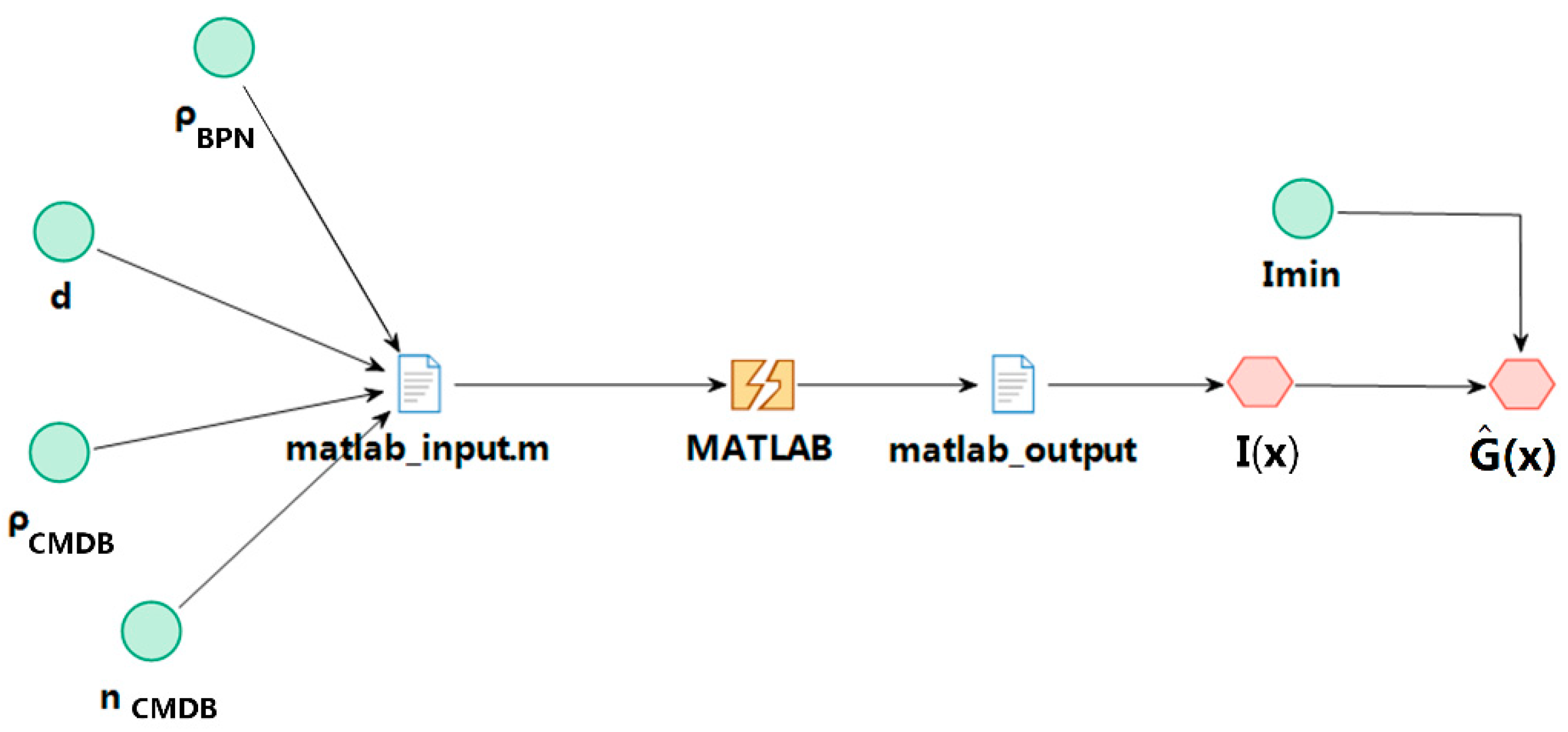


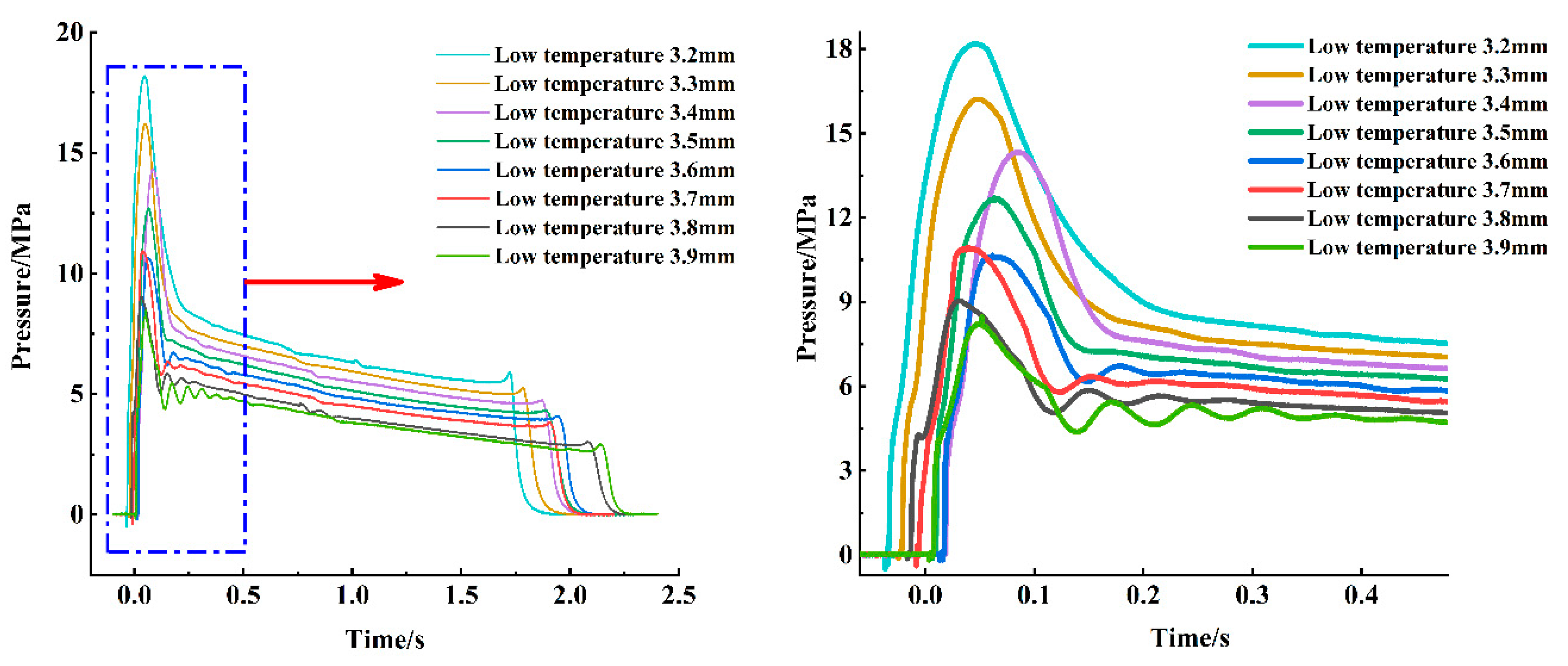
| Parameter | Value | Parameter | Value |
|---|---|---|---|
| Shape characteristic parameter of the CMDB (χ) | 2.5 | Shape characteristic parameter of the BPN (χ) | 4.19 |
| Shape characteristic parameter of the CMDB (λ) | −0.3 | Shape characteristic parameter of the BPN (λ) | −1.28 |
| Shape characteristic parameter of the CMDB (μ) | 0 | Shape characteristic parameter of the BPN (μ) | 0.25 |
| Density of the CMDB particles (ρCMDB) | 1.589 g·cm−3 | Density of the BPN particles (ρBPN) | 1.679 g·cm−3 |
| Explosion temperature of the CMDB (Tf) | 3354 K | Explosion temperature of the BPN (Tf) | 3321 K |
| Specific heat ratio of the CMDB (k) | 1.87 | Specific heat ratio of the BPN (k) | 1.31 |
| Burn rate exponent the CMDB (n) | 0.22 | Burn rate exponent the BPN (n) | 0.31 |
| Covolume of the CMDB (αg) | 6.4 × 10−4 m3/kg | Covolume of the BPN (αg) | 1.3 × 10−4 m3/kg |
| Convective heat transfer coefficient (h) | 1050 W·m−2·K−1 | Stefan–Boltzmann constant (σs) | 5.67 × 10−8 W·m−2·K−1 |
| Absorption rate of the vessel wall (αw) | 0.24 | Net emissivity of the product (Em) | 0.24 |
| Temperature of the ignition case (TIC) The diameter of the nozzle (d) | 233.15 K 3.6 mm | Temperature of the main charge chamber (TIC) | 233.15 K |
| Parameter | Pm/MPa | Pi/MPa | ts/s | tv/s |
|---|---|---|---|---|
| Simulation model | 11.07 | 6.17 | 0.16 | 2.14 |
| Experiment 1 | 10.76 | 5.38 | 0.15 | 2.17 |
| Experiment 2 | 10.48 | 5.60 | 0.14 | 2.23 |
| Experiment 3 | 11.49 | 6.81 | 0.13 | 1.91 |
| Difference with respect to the average value of exp. Results (%) | 1.35 | 4.04 | 14.28 | 1.90 |
| Symbol | Mean | Std. | Distribution Type |
|---|---|---|---|
| ρBPN (g·cm−3) | 1.679 | 0.02 | Normal |
| ρCMDB (g·cm−3) | 1.589 | 0.01 | Normal |
| nCMDB | 0.22 | 0.01 | Normal |
| d (mm) | 3.6 | 0.007 | Normal |
| Name | Type |
|---|---|
| ρBPN | Input variable |
| d | Input variable |
| ρCMDB | Input variable |
| nCMDB | Input variable |
| Imin | Input variable |
| MATLAB_input.m | MATLAB input script file |
| MATLAB_output | MATLAB output file |
| MATLAB | MATLAB execution commands |
| I(x) | Output variable |
| Display function of the ignition |
| Method | Reliability | Reliability Index |
|---|---|---|
| Kriging + TLFF + MCS (81 samples) MCS (106 samples) | 0.8383 0.8281 | 0.0719 0.0706 |
| Variable | Mean Sensitivity | Standard Deviation Sensitivity |
|---|---|---|
| ρBPN | 0.03 | −0.001 |
| nCMDB | 0.411 | −0.011 |
| d | −0.900 | −0.006 |
| ρCMDB | 0.136 | −0.001 |
Publisher’s Note: MDPI stays neutral with regard to jurisdictional claims in published maps and institutional affiliations. |
© 2022 by the authors. Licensee MDPI, Basel, Switzerland. This article is an open access article distributed under the terms and conditions of the Creative Commons Attribution (CC BY) license (https://creativecommons.org/licenses/by/4.0/).
Share and Cite
Niu, L.; Liu, Y.; Wang, J.; Tu, H.; Dong, H.; Yan, N. Reliability Analysis of Pyrotechnic Igniter for Hydrogen-Oxygen Rocket Engine with Low Temperature Combustion Instability Failure Mode. Appl. Sci. 2022, 12, 3414. https://doi.org/10.3390/app12073414
Niu L, Liu Y, Wang J, Tu H, Dong H, Yan N. Reliability Analysis of Pyrotechnic Igniter for Hydrogen-Oxygen Rocket Engine with Low Temperature Combustion Instability Failure Mode. Applied Sciences. 2022; 12(7):3414. https://doi.org/10.3390/app12073414
Chicago/Turabian StyleNiu, Lei, Yang Liu, Jingcheng Wang, Hongmao Tu, Haiping Dong, and Nan Yan. 2022. "Reliability Analysis of Pyrotechnic Igniter for Hydrogen-Oxygen Rocket Engine with Low Temperature Combustion Instability Failure Mode" Applied Sciences 12, no. 7: 3414. https://doi.org/10.3390/app12073414






